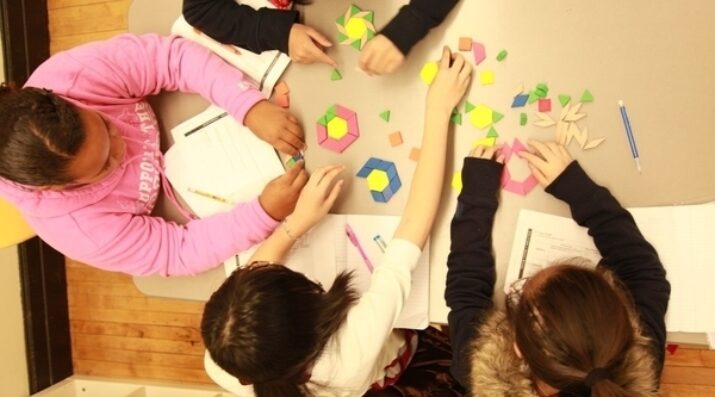New Designs for School
Empowering Students through Voice and Choice: Personalized Learning in Math and Beyond
Topics

We’ve all had the experience of truly purposeful, authentic learning and know how valuable it is. Educators are taking the best of what we know about learning, student support, effective instruction, and interpersonal skill-building to completely reimagine schools so that students experience that kind of purposeful learning all day, every day.
When personalized learning is combined with voice and choice, math teachers and students can tailor what and how the student learns to meet their individual needs.
Student voice and choice have numerous benefits for students beyond just their classwork. It empowers them to be better prepared, advocate for themselves, make responsible decisions, and gain a sense of ownership over their learning. Personalized learning is another approach that emphasizes agency in how students learn new skills, review past concepts, and progress throughout the year.
Incorporating student voice and choice in the classroom encourages students to take an active approach to learning. Allowing them to choose activities—such as hands-on projects, video lesson plans, or group work—that align with their strengths motivates them to tackle challenging concepts in a way that resonates with their individual learning style.
To determine if you are already using student voice in your classroom, Move This World recommends asking yourself the following questions:
- When do students express themselves, their thoughts, and their ideas?
- Are those moments prompted by the teacher?
- How do students use their voices in your classroom currently?
If you feel that student voice and choice could benefit your classroom, here are some questions to consider:
- What types of lessons do students engage with the most?
- How do students prefer to work with each other on small-group and large-group assignments?
- Which skills and lessons are students most excited to start working on?
- When tackling a new and challenging skill, how do students respond?
Let’s consider what student voice and choice can look like in math classrooms in particular. Math, like some other subjects, is built upon a series of interconnected concepts that must be mastered over time. Traditional classrooms usually focus on teaching one or more concepts at a time, with little to no time devoted to ensuring that past skills are mastered. This approach puts students who learn at a different pace, in different ways, or who miss certain days at a disadvantage when trying to learn new skills. But faster learning growth can come when learners are empowered through voice and choice.
When combined with voice and choice, personalized learning in math can tailor what and how students learn to meet each student’s individual needs. Diagnostic assessments and multiple learning style lesson plans can be used to tailor instruction. Small groups can focus on singular concepts, personal work can be done on paper or through technology, or the entire class can work together with hands-on activities. Knowing each student’s level of mastery of specific skills allows educators to build upon each student’s strengths and reinforce the skills they need to master before moving on to new concepts.
This approach is even more critical now than ever. The pandemic and traditional education systems have created gaps in the series of math skills that students build over time while strengthening others, resulting in a patchwork of incomplete learning. The Iceberg Problem underscores how math is cumulative and how unfinished learning can make it difficult for students to master advanced skills.
But with student voice and choice and the use of math programs such as Teach to One Roadmaps, students and educators can decide together how to support learning in the classroom. Knowing where each student excels and where they could reinforce some skills allows students to choose where to start. Programs that challenge students to expand on their skills while simultaneously underscoring their strengths allows students to take control, and pride, in their learning.
In conclusion, incorporating student voice and choice and personalized learning into math instruction can significantly benefit students. It empowers them to take an active role in their learning, work at their own pace, and master skills before moving on to new concepts. By valuing and implementing student voice and choice, educators can help their students to reach their full potential in math and beyond.
Photo at top courtesy of New Classrooms.




